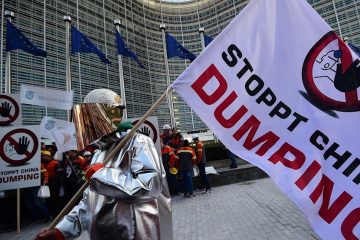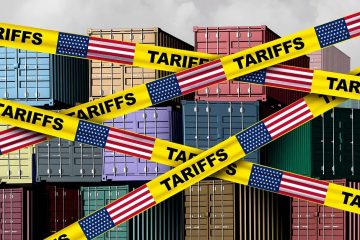New data suggest the euro-zone economy is slowing

EVEN AS the European Central Bank (ECB) halts stimulus, it looks as if the economy needs revving up again. In December the bank said it would stop expanding its €2.6trn ($ 3trn) bond-buying scheme. But on the same day it trimmed its forecasts of economic growth and warned that “the balance of risks is moving to the downside”. Its warnings have now materialised. Several measures of economic activity in the euro zone have disappointed in recent weeks. The much-touted “euroboom” that began in 2017 has run its course.
The slowdown was first thought to be temporary. At the start of 2018 sluggish growth in Germany, the bloc’s largest economy, was blamed on one-off factors ranging from an outbreak of flu to labour disputes and the timing of national holidays. Weak third-quarter data was chalked up to bottlenecks in the car industry, which had to meet new emissions standards for diesel engines. In the fourth quarter the populist gilets jaunes protests in France dealt growth another temporary blow. The demonstrations are expected to have lowered output in the euro zone’s second-largest economy by 0.1%.
But recent figures suggest the economic slowdown is broad-based. “There is more going on than the one-offs that have continually plagued the euro-zone economy,” says Bert Colijn, an economist at ING, a bank. “It’s not country- or sector-specific anymore. The weakness is widespread,” says Felix Huefner of UBS, another bank. On January 4th IHS Markit, a data provider, said that in December its euro-zone purchasing managers’ index (PMI)—a closely watched gauge of economic activity—fell to a four-year low. PMIs declined in the zone’s four largest economies, Germany, France, Italy and Spain. Figures released on January 14th revealed that euro-zone industrial production fell by 3.3% year-on-year in November. That is its largest annual decline in six years.
Early signs suggest GDP too will disappoint. On January 15th Germany’s statistics office released figures suggesting that the economy only narrowly avoided a recession last year: after contracting by 0.2% in the third quarter, it barely grew in the fourth. Italy seems likely to have gone into recession in the second half of 2018.
While many have pointed to weak external demand as the primary cause of recent growth woes, domestic demand has also fallen short. Andrew Kenningham of Capital Economics notes that consumption growth slowed significantly in 2018 even as unemployment fell, a worrying sign that “consumers have lost their nerve”. Consumer confidence fell over the course of last year.
And there are lurking risks. Mr Colijn reckons the biggest threats to growth in 2019 include a slowdown in China, a disorderly no-deal Brexit, and an escalating trade war with America. Trade is slowing. The World Bank recently lowered its expectations of growth in global trade volumes for this year and the next by around half a per cent.
For now, a full-blown recession across the currency area this year seems unlikely. Economists expect the euro-zone economy to expand by 1.5% in 2019. But if such growth fails to materialise, the ECB will need to consider what tools to use to stimulate it. It could extend its forward guidance—for the moment it expects to keep interest rates at current levels “at least through the summer”.
Another option would be to extend its targeted longer-term refinancing operations, which offer cheap funds to banks that lend to firms and households. As for the bond-buying programme, Mario Draghi, the ECB’s president, acknowledged in December that at points it was “the only driver” of recovery in some parts of the euro zone. Disappointing data suggest the central bank might not hold the brakes down for long.









